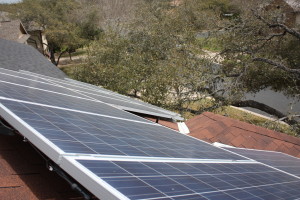 Even the best policies are rarely perfect from the onset. Sometimes circumstances change and sometimes certain outcomes simply weren’t considered. Either reality can result in a potentially great policy being only mediocre, or even bad. Part of what makes a great policy, is a willingness to make corrections as needed.
Even the best policies are rarely perfect from the onset. Sometimes circumstances change and sometimes certain outcomes simply weren’t considered. Either reality can result in a potentially great policy being only mediocre, or even bad. Part of what makes a great policy, is a willingness to make corrections as needed.
Austin Energy’s value of solar tariff (VoS) was the first effort of it’s kind. Across most of the country, solar customers are billed for energy used, minus energy produced – a policy called net metering. Instead, Austin Energy’s VoS establishes a monetary value for the energy produced from local solar installations. Customers are billed for all of the energy they use at their regular tiered rates and are then credited for all the energy they produce at the VoS rate.

Austin Energy solar customer have 2 meters, one to measure energy consumption and one to measure energy production.
The VOS was intended to ensure that both the solar customers and the utility were getting fair and accurate value for the energy that each was providing. And, the incentive to reduce electric consumption that is provided by the tiered rates is maintained. That’s because even if an energy hog offsets some of his use with solar, he will still be charged a higher rate for that consumption. Solar is great, but using less energy is even better. The VoS was a lofty new idea, adopted by a utility known for it’s renewable energy innovation.
A couple years into using the VoS, it is working, but needs a bit of perfecting. On Monday evening, the Austin Electric Utility Commission (EUC) voted to support a few key changes, as proposed by Commissioner Clay Butler.
- Remove the year-end credit sweep, allowing credits to roll over until participant ceases to be AE customer – This will protect customers from having bill credits they have accrued from solar production taken from them. Those credits can be used to offset energy use in future months or even years.
- Remove the 20 kW tariff cap – This will allow larger solar systems to be an economical choice for some customers.
- Set a floor on the VoS tariff tied to the residential electric rate – Setting a floor for the VoS will give customers some certainty of the value they can count on from their investment. The VoS would still fluctuate, but not below a certain point. That exact point needs to be set, but tieing it to the second tier rate would preserve the incentive to conserve energy (to avoid higher rate tiers), while ensuring that VoS credits would be fairly valued in comparison to energy charges low and medium use customers.
- Allow leased system “hosts” to receive VoS credits – Leasing is an option that will help expand solar adoption. Applying the VoS equally to all residential solar systems will help making leasing a viable option in Austin.
- Adopt 5 year rolling average in calculating annual VoS assessment – A rolling 5 year average for the VoS will smooth out the changes from year to year and therefor provide more stability for customers.
- The City Council and City Manager reject the price quote on the 25 year guaranteed fuel price ($5.28 per MMBtu ) proposed by Austin Energy for the 2015 rate assessment. – The projected future price of natural gas is the single most significant factor in the calculation of the VoS. Projections of natural gas prices are notoriously wrong and under projecting those future prices results in a lower VoS and less value going to solar customers.
Austin Energy has already endorsed several these recommendations (#’s 1, 2, 4, and 5). The next step will be for the Austin City Council to act on these recommendations. There will be opportunities for the public weigh in on these issues before Council as part of the budget process in August.


